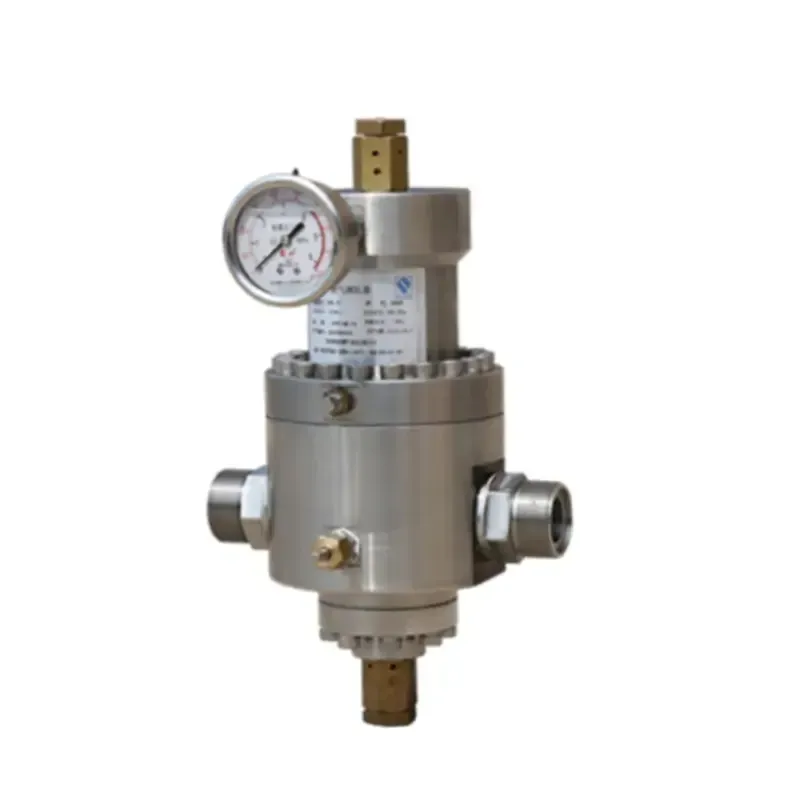
Nov . 08, 2024 01:08
Back to list
Closing Valve Mechanisms and Their Importance in Fluid Control Systems
The Importance of Shut-off Valves in Modern Engineering
Shut-off valves, or isolation valves, play a crucial role in various engineering and industrial applications. These valves are designed to control the flow of fluids within pipelines and are integral to ensuring the safety and efficiency of numerous systems. In this article, we will explore the different types, applications, and advantages of shut-off valves.
What are Shut-off Valves?
Shut-off valves are devices used to stop the flow of liquids or gases in a piping system. They can be manipulated manually or automatically, making them versatile for several applications. Common types of shut-off valves include gate valves, ball valves, butterfly valves, and globe valves. Each type has its unique features and suitability depending on the system requirements.
Types of Shut-off Valves
1. Gate Valves Often used in large-scale applications, gate valves are designed to provide minimal resistance to flow. They function by raising or lowering a gate within the valve body. When fully open, they allow for unhindered flow, making them ideal for pipelines where a complete shut-off is necessary.
2. Ball Valves Featuring a spherical disc that rotates within the valve seat, ball valves provide an excellent sealing capability and are easy to operate. They are widely used in applications requiring a quick shut-off and are available in various sizes and materials.
3. Butterfly Valves These valves use a rotating disc to control flow and are particularly popular in water and wastewater applications. Their lightweight design makes them suitable for large pipes, and they offer quick operation with minimal resistance.
4. Globe Valves Known for their throttling capability, globe valves are typically used where flow regulation is essential. They consist of a movable disk and a stationary ring seat, allowing for fine adjustments.
.
Shut-off valves are employed across a plethora of industries, including
صمام الإغلاق

- Water Treatment In water treatment plants, shut-off valves are essential for controlling the distribution and flow of water, ensuring that the system operates efficiently.
- Oil and Gas The oil and gas industry relies on shut-off valves for safety and control. These valves prevent leaks and are critical during maintenance procedures, allowing sections of pipelines to be isolated.
- Chemical Processing In chemical manufacturing, shut-off valves help manage the flow of hazardous substances, ensuring safe handling and processing.
- HVAC Systems In heating, ventilation, and air conditioning systems, shut-off valves regulate fluid movement, enabling efficient heating and cooling processes.
Advantages of Shut-off Valves
1. Safety By isolating sections of a system, shut-off valves prevent leaks and accidents, making them essential for maintaining safety standards.
2. Efficiency These valves help streamline processes by allowing for maintenance and repairs without needing to shut down the entire system.
3. Versatility Shut-off valves can be used in a variety of applications and with different media, including water, gas, and corrosive chemicals.
4. Maintenance Shut-off valves simplify maintenance procedures, allowing for quick isolation of sections without significant downtime.
Conclusion
In conclusion, shut-off valves are vital components in modern engineering and industrial systems. They enhance safety, efficiency, and ease of maintenance across various applications. As industries continue to evolve, the demand for reliable and efficient shut-off valves will remain critical. Understanding their types, applications, and advantages will enable professionals to make informed decisions and ensure optimal performance in their systems. Embracing the importance of these valves can lead to improvements in safety standards and operational efficiency, ultimately benefiting various sectors reliant on fluid control.
Latest news
-
Safety Valve Spring-Loaded Design Overpressure ProtectionNewsJul.25,2025
-
Precision Voltage Regulator AC5 Accuracy Grade PerformanceNewsJul.25,2025
-
Natural Gas Pressure Regulating Skid Industrial Pipeline ApplicationsNewsJul.25,2025
-
Natural Gas Filter Stainless Steel Mesh Element DesignNewsJul.25,2025
-
Gas Pressure Regulator Valve Direct-Acting Spring-Loaded DesignNewsJul.25,2025
-
Decompression Equipment Multi-Stage Heat Exchange System DesignNewsJul.25,2025

